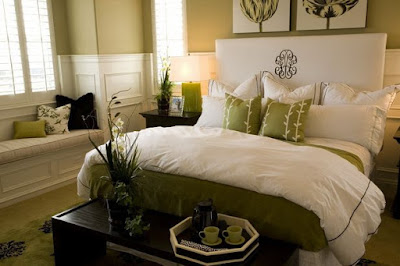Paint a Kitchen After Years of Greasy Build-Up
 Kitchens are subjected to a lot of greases and cooking oils. After years of use, a kitchen's walls can be caked with oil. Paint needs a clean and oil-free surface to properly adhere. Oil and grease on the walls will interfere with the paint, creating discoloration and chipping in the paint’s finish. Before you can paint any surface in the kitchen, remove the greasy buildup completely.
Kitchens are subjected to a lot of greases and cooking oils. After years of use, a kitchen's walls can be caked with oil. Paint needs a clean and oil-free surface to properly adhere. Oil and grease on the walls will interfere with the paint, creating discoloration and chipping in the paint’s finish. Before you can paint any surface in the kitchen, remove the greasy buildup completely.Removing Greasy Buildup
Mix household detergent and warm water in a large bucket. Follow the directions on the cleaning solution for the ratios of detergent to water.
Dip a sponge mop into the solution and wring it out until it is damp but not dripping wet.
Run the mop down the wall from top to bottom. Press firmly to dislodge the grease and grime. Work on a 2-foot-wide section of wall at a time. Clean the entire wall from top to bottom.
Wring out the mop into the sink or an empty bucket. The water that wrings out will be dingy and dirty.
Wash the same area again with the wrung-out sponge mop. Pick up any remaining grime and any water residue.
Dry the area with a clean towel.
Repeat this process across the entire kitchen to remove all of the grease buildup from the room.
Painting the Ktchen
Sand the walls with medium-grit sandpaper. Sanding will create texture on the wall and will allow the primer to sink in and grab the walls. Work the sandpaper across the walls in a circular motion. Wipe away sanding dust with a damp rag.
Pour primer into a paint pan. Choose a stain-blocking primer that will prevent oil and residue left on the walls from seeping through the paint and creating stains. Roll the primer onto the walls in a thin, even layer. Let the primer dry for four hours.
Paint the walls with interior latex paint. Choose a semi-gloss paint. Paints with higher sheen will allow you to wipe them clean with a damp rag. Regular cleaning will keep oil and grease from building up on the walls. Paint the edges of the room with a trim brush, cutting in about 3 inches from the ceiling and baseboards. Paint the large portion of the wall with a 1/4-inch nap roller. Apply two to three coats of paint. Let each coat dry before applying the next.











Comments
Post a Comment